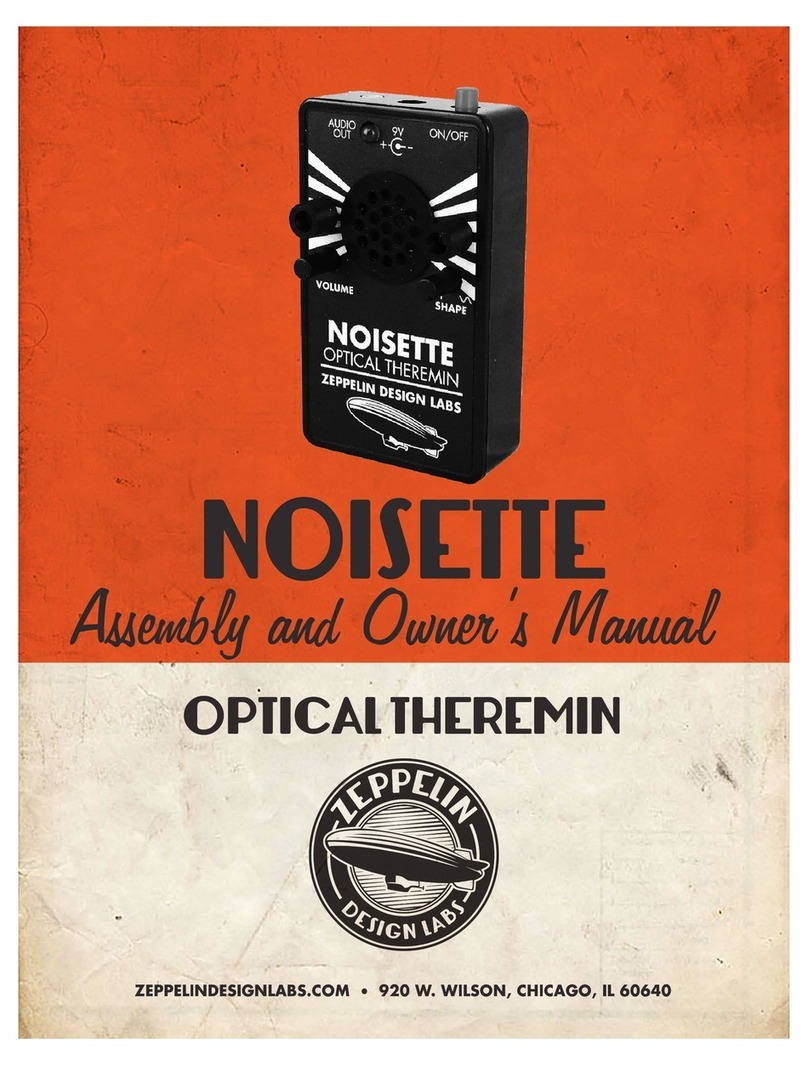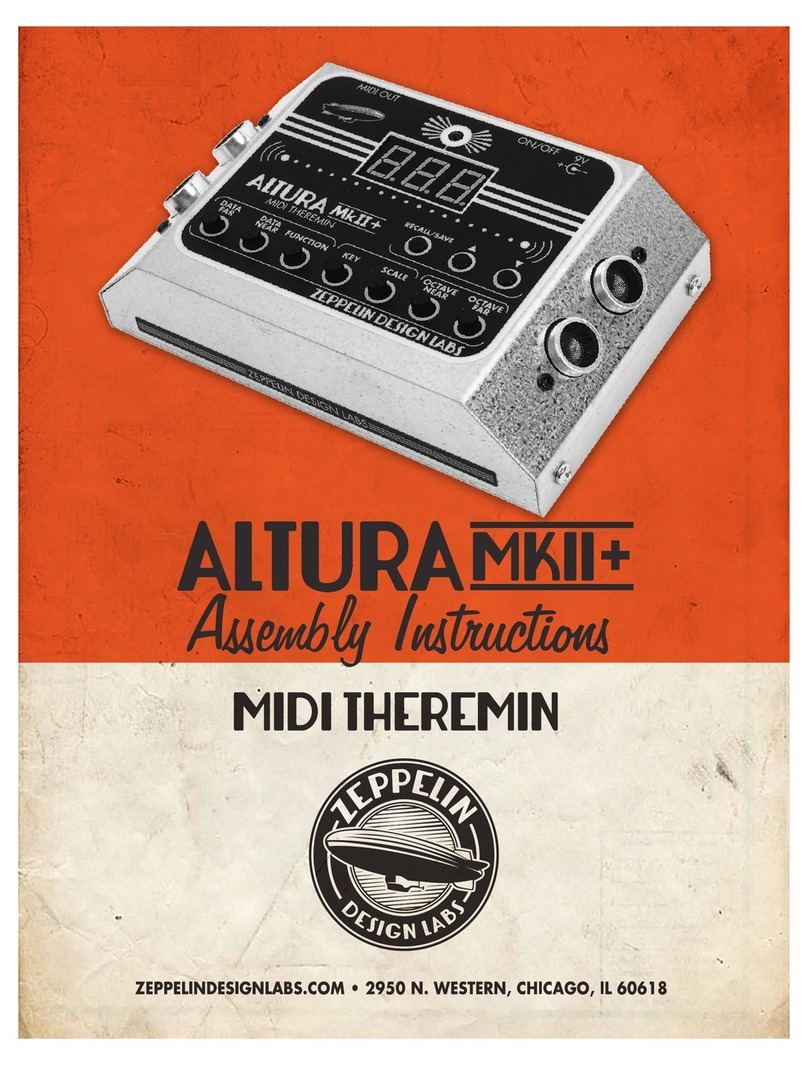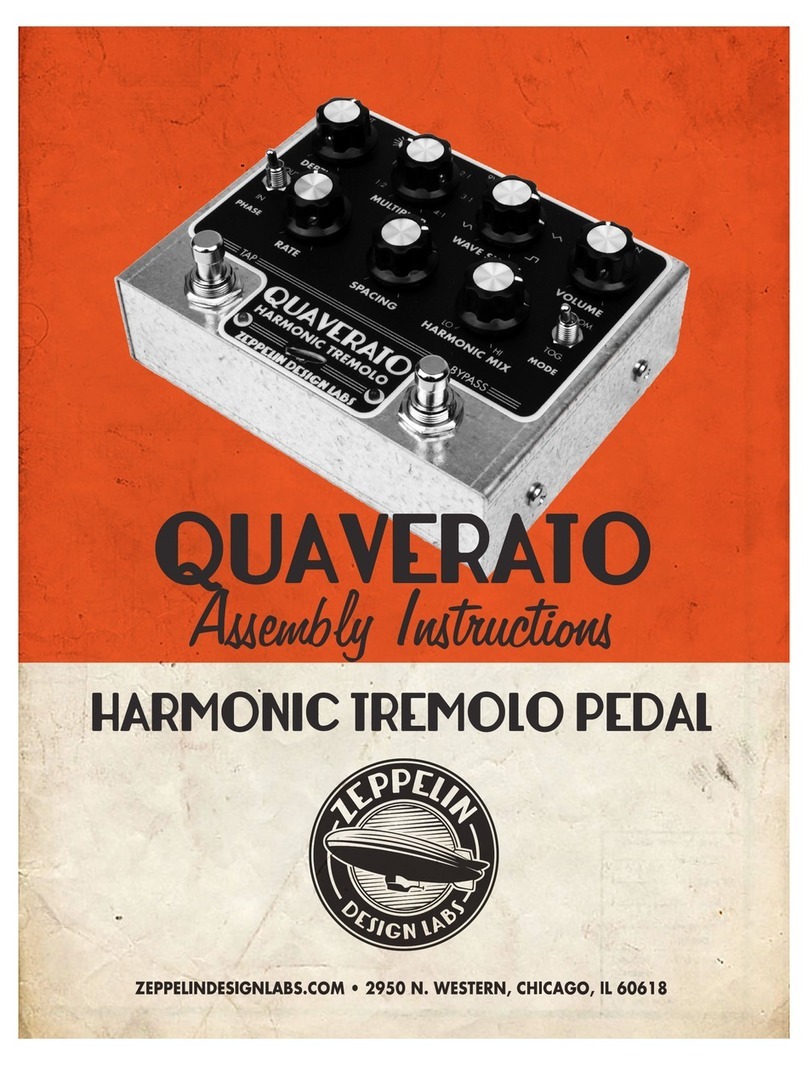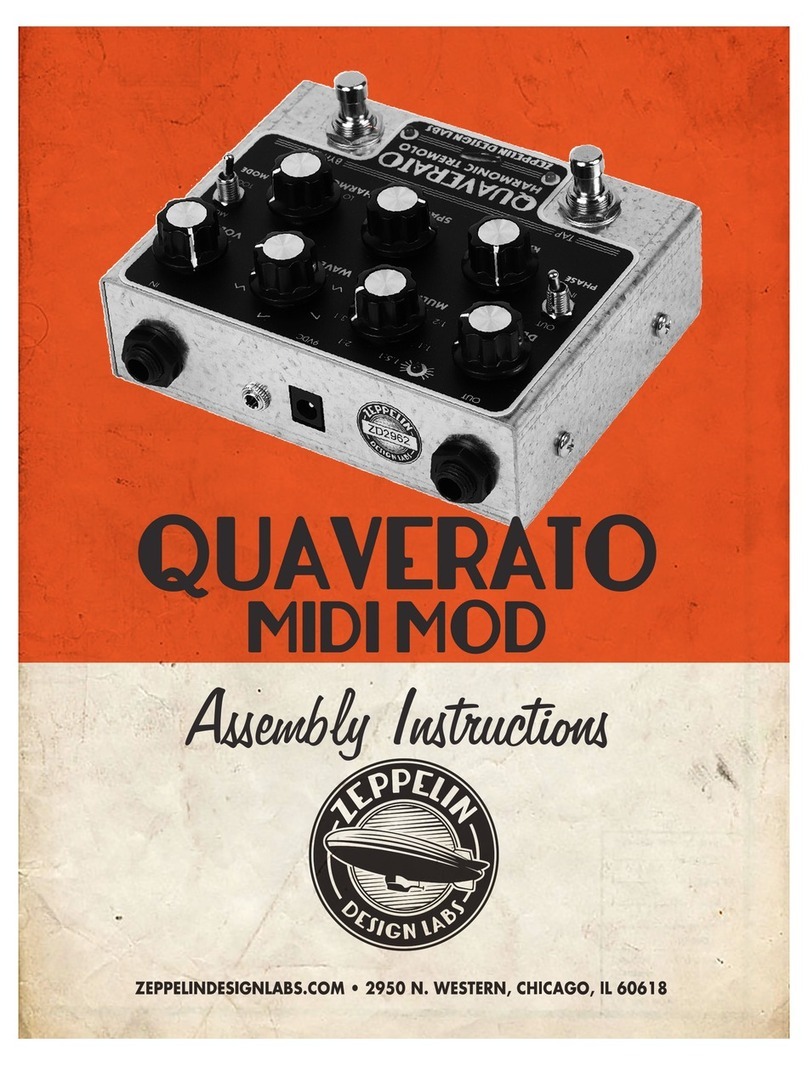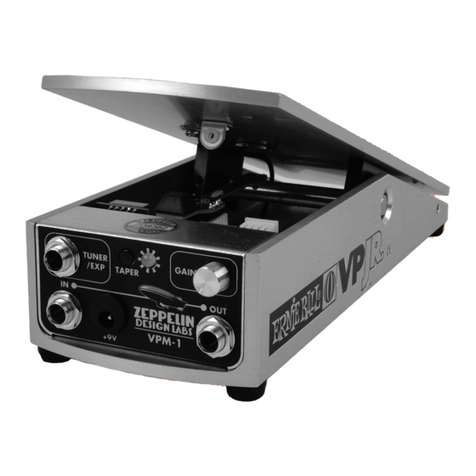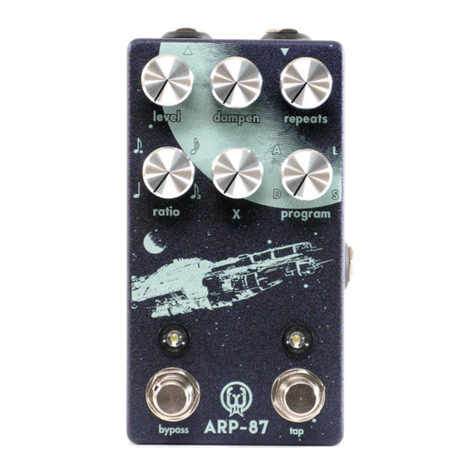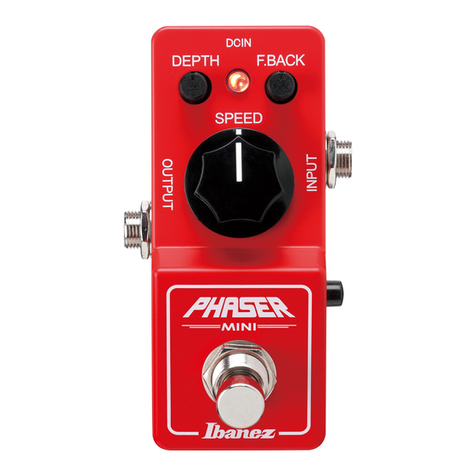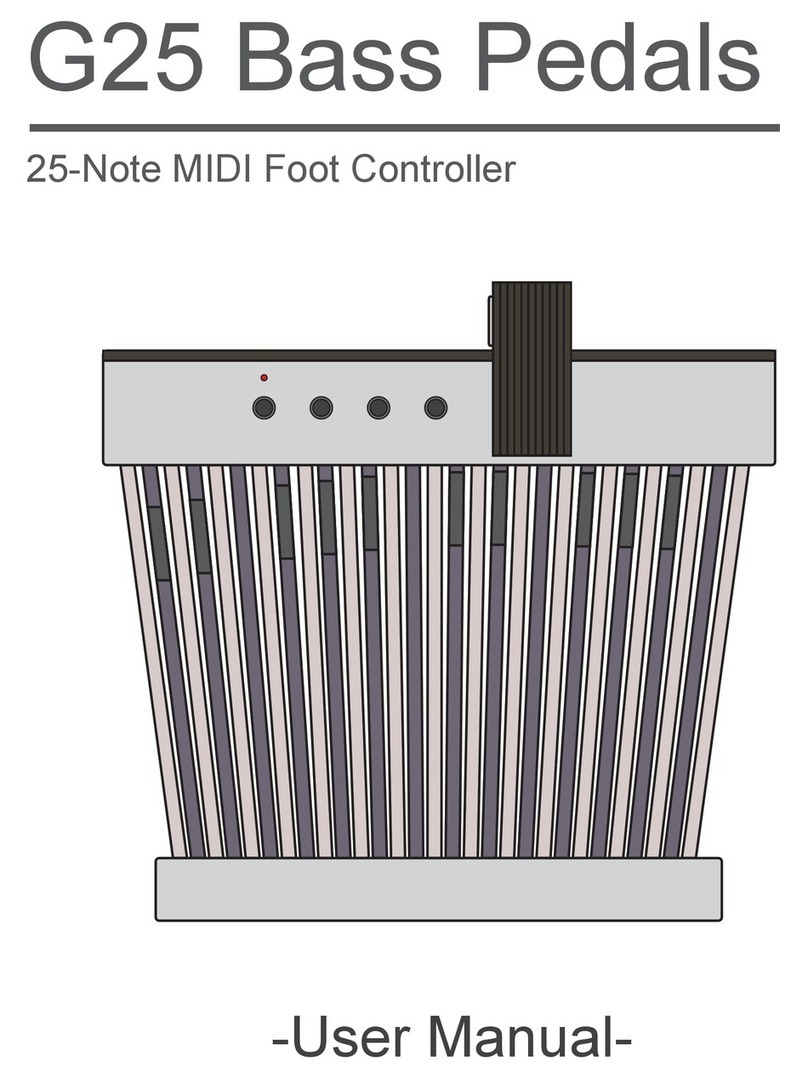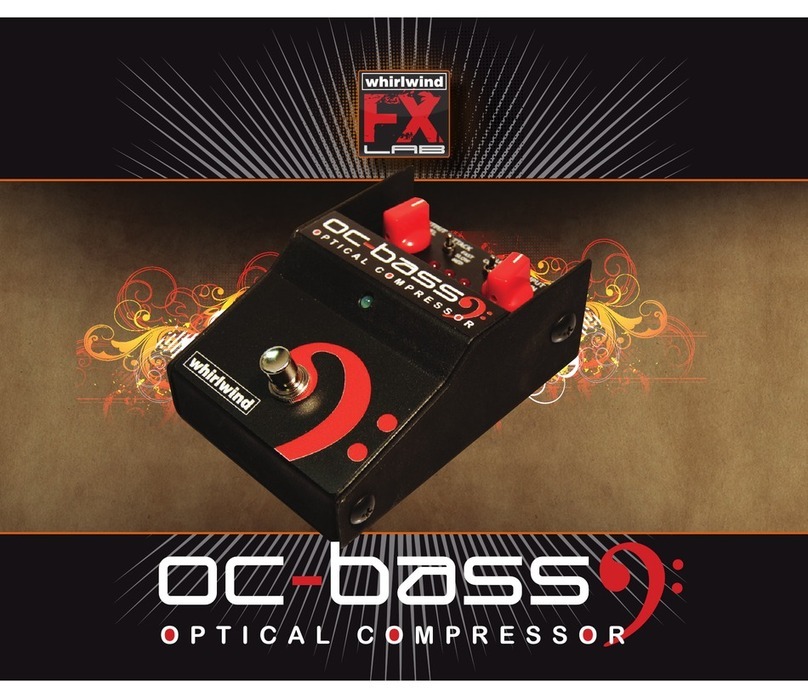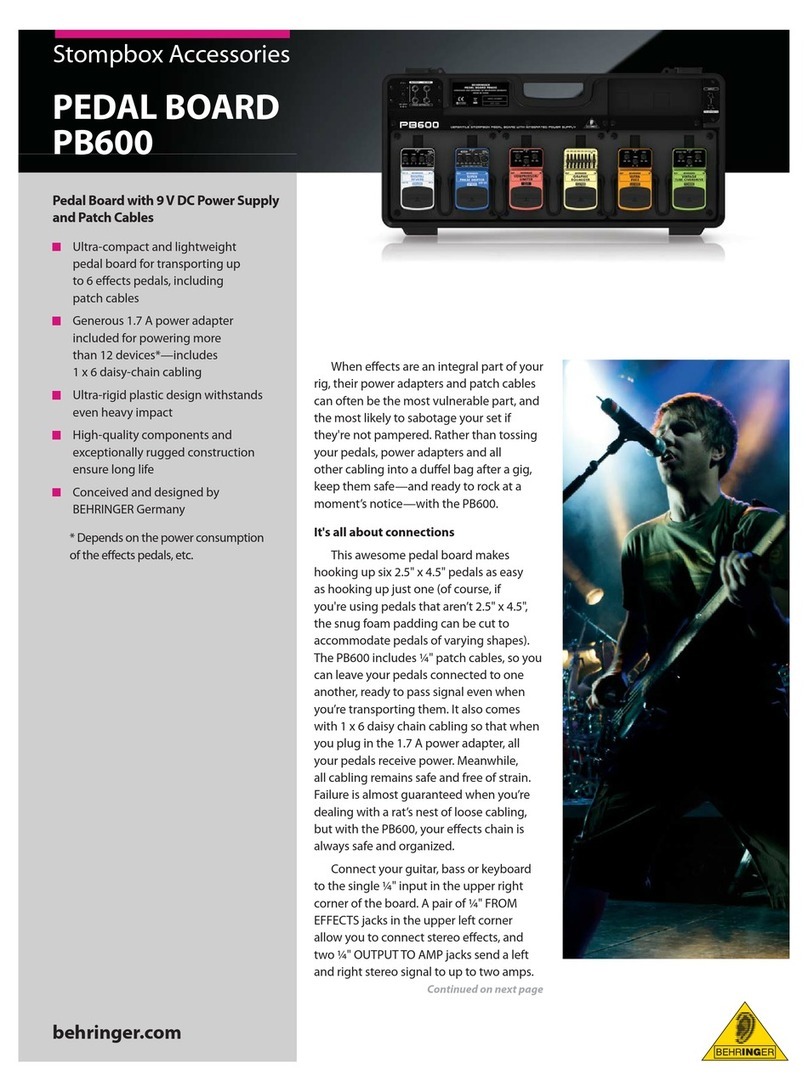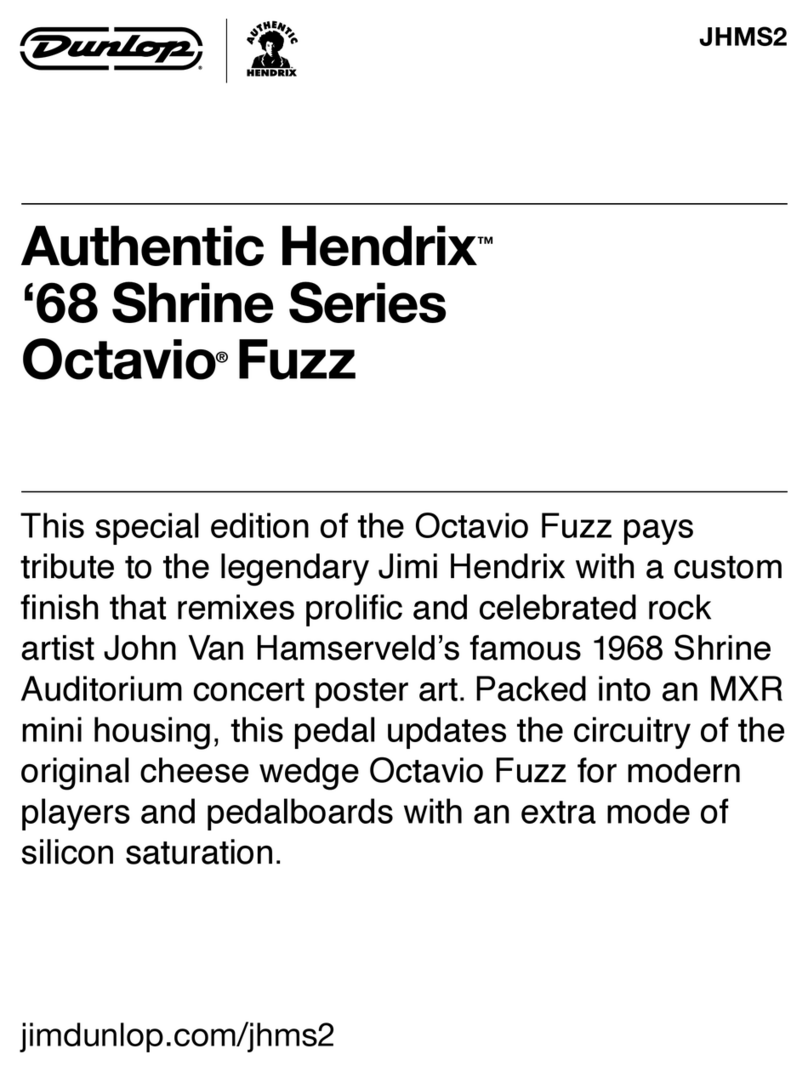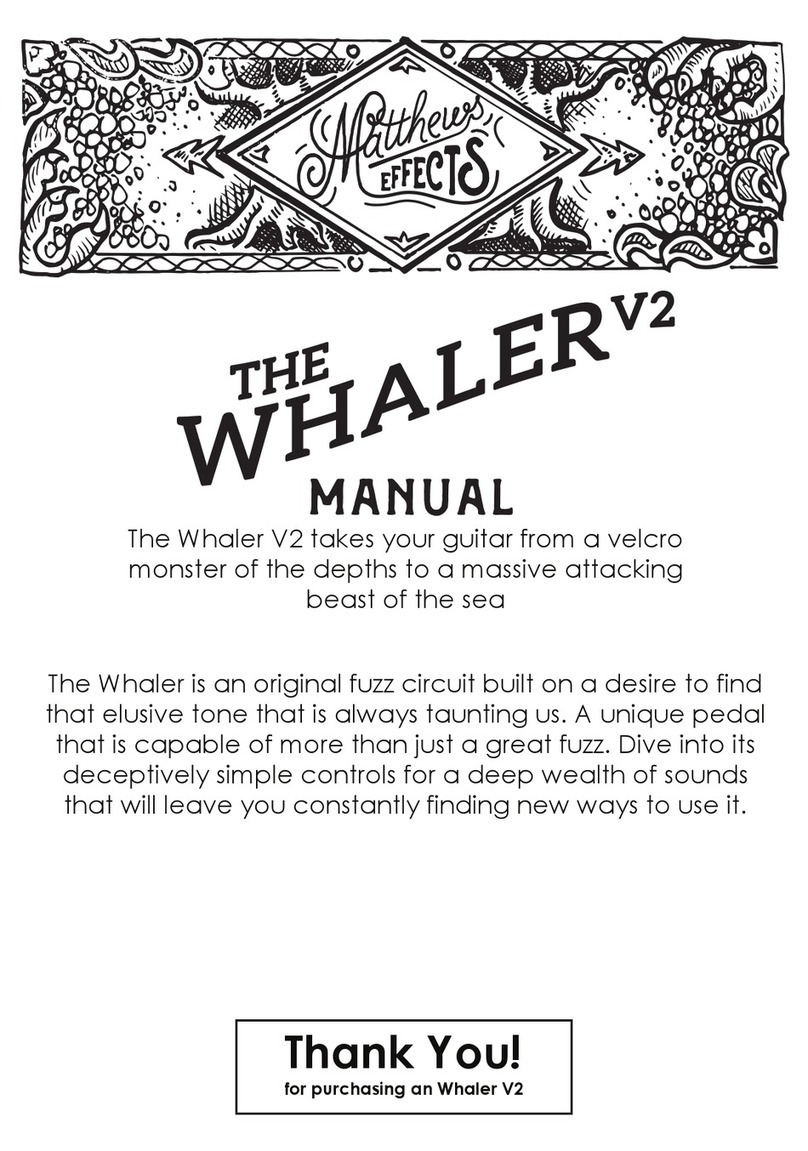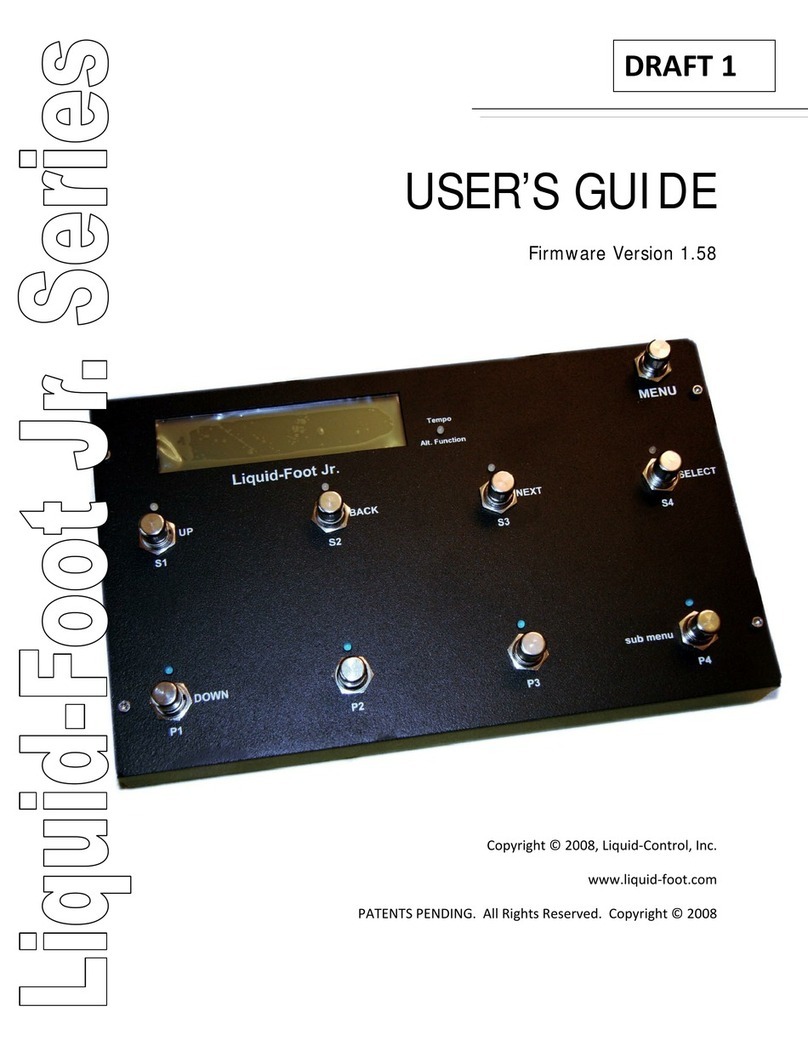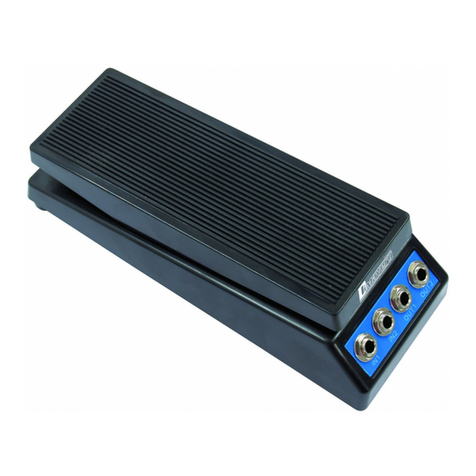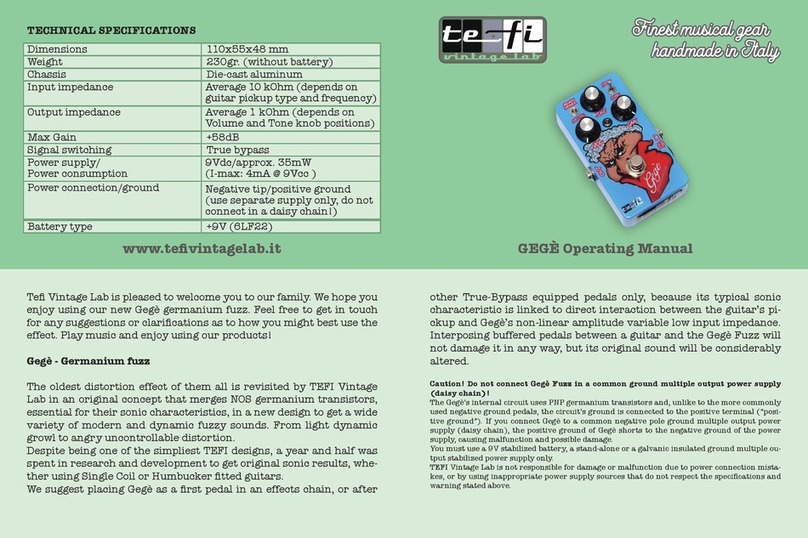
3
INTRODUCTION
ABOUT THE ERNIE BALL VOLUME PEDAL
The Ernie Ball volume pedal has been around since 1975. The
chassis of these early volume pedals was originally made
from two pieces of angle iron welded together, which
earned them a reputation of being extremely robust.
Later, the chassis was replaced with a solid aluminum
extrusion that greatly reduced the weight while retaining
the structural integrity of the original. A somewhat novel
approach was used to alter the value of a volume potentiometer
incorporating a string and a set of springs, reminiscent of the tuning
wheel on older analog radios. Over the years, some minor mechanical and
electrical design changes have been made, but the general concept of how these
pedals work has remained the same.
The Ernie Ball volume pedal has a lot of great
features. Being made out of solid aluminum, it is
nearly indestructible. The string and spring mechanism
for turning the potentiometer creates a very smooth
response in volume. Also, the placement of the axle on
the treadle makes for a very comfortable pedal action.
It’s no wonder that the Ernie Ball volume pedal is the
most popular volume pedal in the world.
But for all its great features, there are a couple of
serious down-sides to this pedal. Since the audio
signal is sent straight through the potentiometer, any
problems with the potentiometer are directly translated
to the audio signal. This means that if the potentiometer gets dirty or worn out, the audio signal can
sound scratchy. Also, the passive nature of this pedal means that the electrical load of the potentiometer
can have drastic tonal effects on the signal. Any stray capacitance in the guitar cable or anywhere
else in the system will create a RC (resistance-capacitance) filter when coupled with the given value of
the potentiometer. When the potentiometer is turned all the way up, to a higher resistance, this effect is
less noticeable; but when the potentiometer is turned to a lower resistance, the high frequencies in the
audible range start to become attenuated. This is what causes the “tone suck” effect when adjusting
the volume control on a passive guitar. Many musicians have resorted to adding a buffer pedal before
their passive volume pedal to help rectify this issue.
Another serious issue with these Ernie Ball volume pedals involves the string and spring mechanism
for adjusting the potentiometer. Over time, the string can actually stretch and cause the action of the
pedal to be off. This often manifests itself in the potentiometer not getting turned all the way in one
direction or the other, which prevents the audio signal from getting as loud or as quiet as it should.
